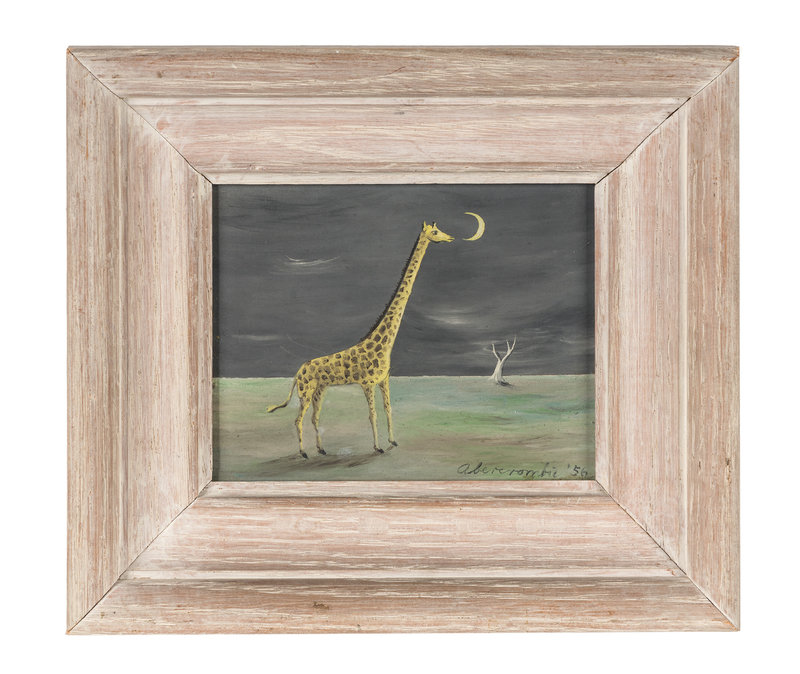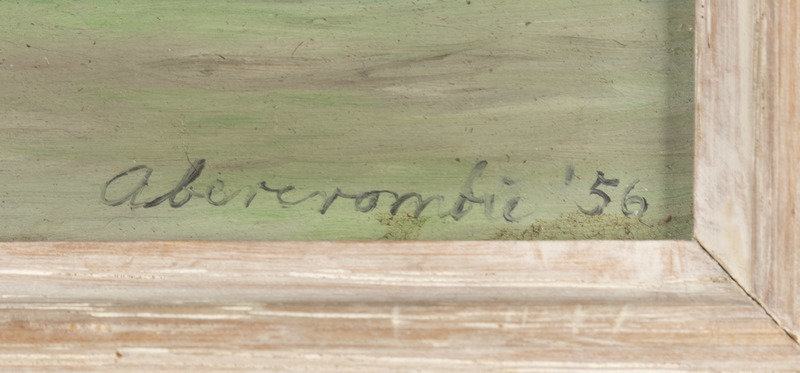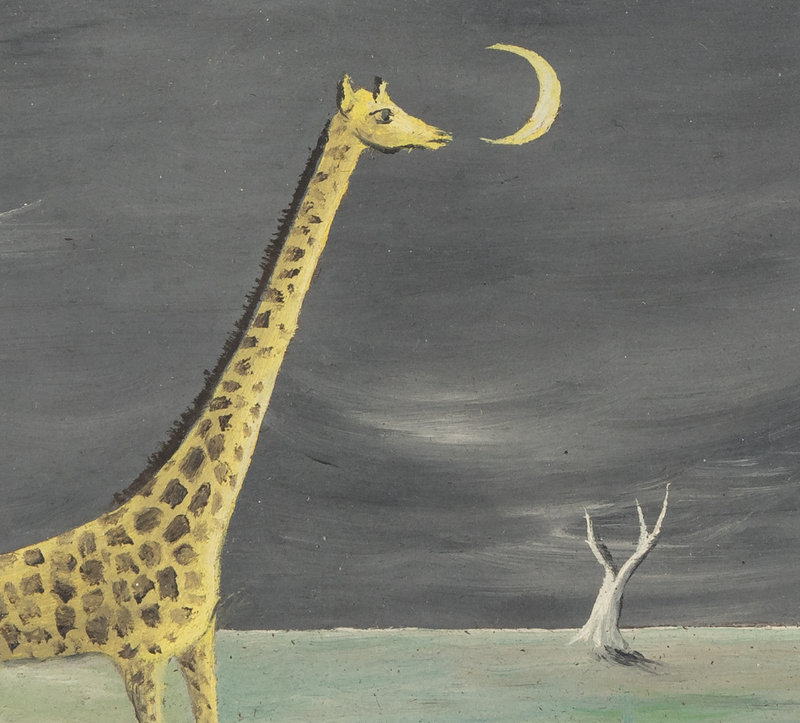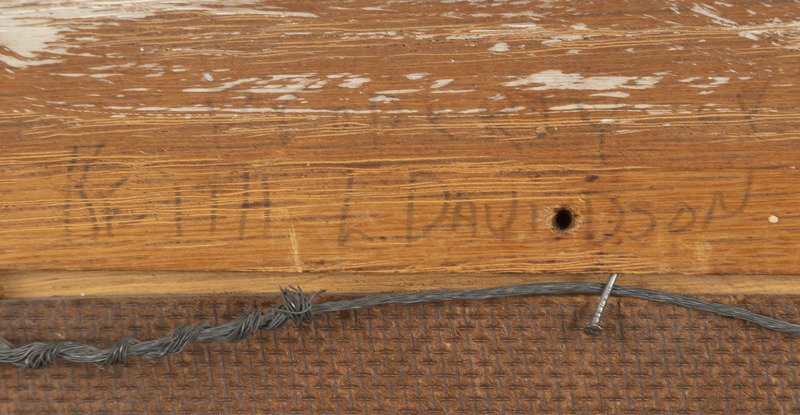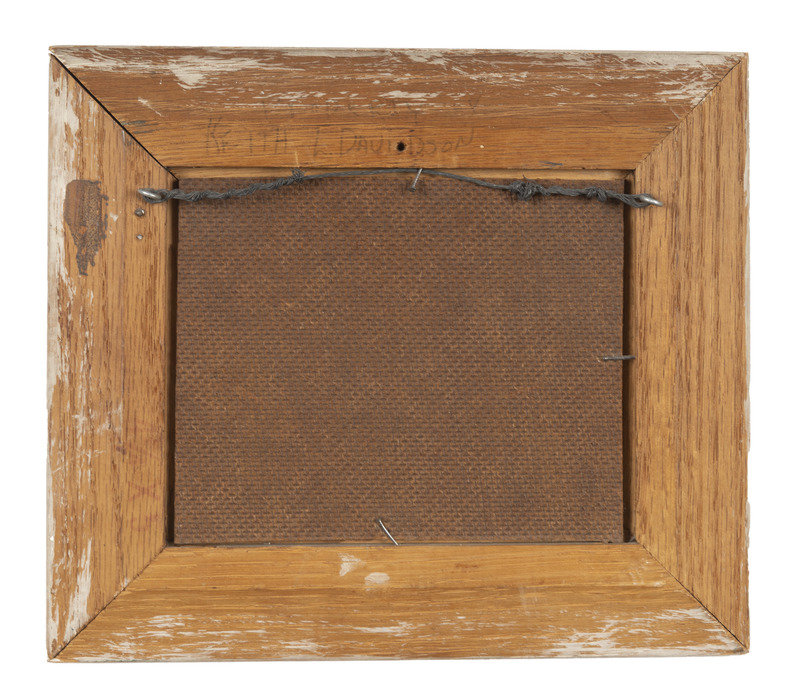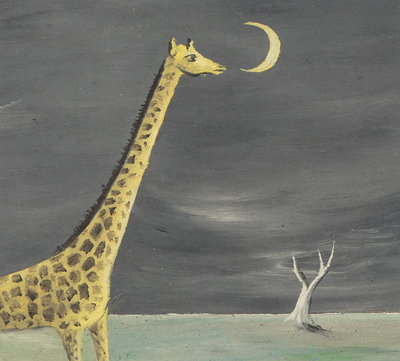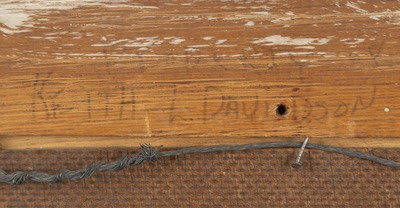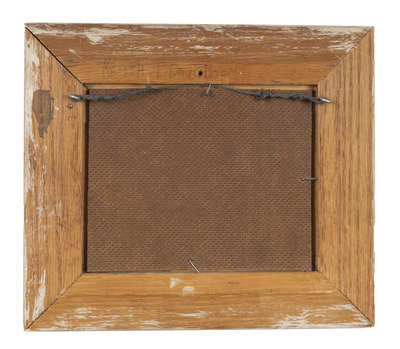Sold for $182,700
We are grateful for the research conducted by Susan Weininger, Professor Emerita, Roosevelt University.
Provenance:
The Artist
Private Collection, (possibly) purchased from the Artist at the Old Town Art Fair, Chicago
Thence by descent to the present owner
Lot note:
The present artwork, Giraffe and Moon, 1956, is a deceptively simple composition that consists of a single giraffe in a landscape empty of anything but a leafless tree. The giraffe reaches up into the dark sky to almost touch the elegant crescent moon. Gertrude Abercrombie created many paintings of giraffes, the earliest dating to around 1938, close to the beginning of her career; the latest dates to 1958. During this 20-year period she did at least 16 paintings in which a giraffe, or on at least one occasion, two giraffes, are the major subject. Sometimes a giraffe appears in the background of a scene, such as the one in Search for Rest, 1951 (Dijkstra Collection), which resembles the one in the painting considered here. The largest of the paintings in which the giraffe is the major subject is 6 x 8 inches, while several are very tiny images (1 ½ x 2 inches or smaller) that Abercrombie created to be made into brooches. Although some of these cannot be located today, the popularity of this subject is attested to by the fact that almost all of them were sold at various venues, including Associated American Artists in Chicago, Katharine Kuh Gallery, the Renaissance Society of the University of Chicago, and the South Side (Hyde Park) Art Fair where the artist was a popular fixture each summer.
This painting is very similar in composition to a work from 1954 and another dated 1952, also titled Giraffe and Moon. While the giraffe in the 1952 painting is facing to the left and in both the 1954 painting and the 1956 paintings the giraffe faces right, the artworks all contain the same simple elements: giraffe, tree, and moon. The 1952 painting is very precise and controlled, following an admonition from her good friend John Wilde to paint more carefully, advice she attempted to heed beginning in the late 1940s. However, the 1954 and 1956 Giraffes are freer in style than the 1952 painting, as were some of her other works in the mid to late 1950s. Although these two later paintings are very similar, the 1956 Giraffe and Moon is not a copy. It is missing the cloud that appears in both other paintings discussed here and appears to have been painted more quickly.
Why giraffes? Abercrombie famously said, “It is always myself that I paint,” and even in her still life paintings and empty rooms she is present. The repertoire of personal objects that recur in her compositions frequently stand in for the artist, and the giraffe may likewise represent her, with her tall, long-necked appearance. Abercrombie adopted the owl and the cat, familiars of the witch, for compositions in which she wanted to emphasize those roles; she might have chosen to identify also with the giraffe, a less familiar creature but something of a unique outlier as she herself. There are numerous self-portraits in which the artist’s neck is elongated, for example, Self Portrait of My Sister, 1941 (Art Institute of Chicago). And in the many images of Abercrombie in a room or a landscape, her neck also appears unnaturally long.
Although there is no direct evidence of Abercrombie’s awareness of this, her interest in giraffes coincided with the widely publicized arrival of two African giraffes in New York enroute to the San Diego Zoo, where they arrived in late 1938, around the same time the artist began to paint these animals. This was an event of some moment, as giraffes were a rarity in the United States at this time; reportedly there were only five of the animals in the country in 1925. While Abercrombie did not generally reference current events in her work, the huge outpouring of publicity about the giraffes’ arrival may have inspired her to inhabit this animal as another alter ego. The moon, which Abercrombie always considered her personal property, is accessible to the long-necked giraffe who is able to reach it by virtue of its height, something the artist would have loved to do herself. This image of the giraffe reaching toward the moon attests to her ownership in a simple, yet resonant way, typical of Abercrombie’s transformation of recognizable things of this world into evocative, meaningful, and mysterious art.

